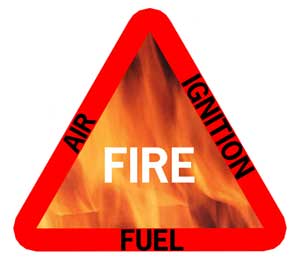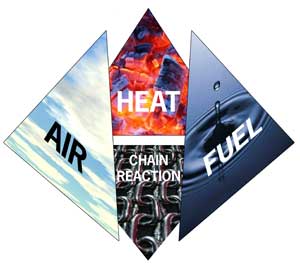In order for gas to ignite there must be an ignition source, typically a spark (or flame or hot surface) and oxygen.
Further reading:

For ignition to take place the concentration of gas or vapour in air must be at a level such that the ‘fuel’ and oxygen can react chemically. The power of the explosion depends on the ‘fuel’ and its concentration in the atmosphere. The relationship between fuel/air/ignition is illustrated in the ‘fire triangle’.
The ‘fire tetrahedron’ concept has been introduced more recently to illustrate the risk of fires being sustained due to chemical reaction.
With most types of fire the original fire triangle model works well – removing one element of the triangle (fuel, oxygen or ignition source) will prevent a fire occurring. However, when the fire involves burning metals like lithium or magnesium, using water to extinguish the fire could result in it getting hotter or even exploding. This is because such metals can react with water in an exothermic reaction to produce flammable hydrogen gas.
Not all concentrations of flammable gas or vapour in air will burn or explode. The Lower Explosive Limit (LEL) is the lowest concentration of ‘fuel’ in air which will burn and for most flammable gases it is less than 5% by volume. So there is a high risk of explosion even when relatively small concentrations of gas or vapour escape into the atmosphere.
LEL levels are defined in following standards: ISO10156, and IEC60079. The ‘original’ ISO standard lists LELs obtained when the gas is in a static state. LELs listed in the EN and IEC standards were obtained with a stirred gas mixture; this resulted in lower LEL’s in some cases (i.e. some gases proved to be more volatile when in motion).

